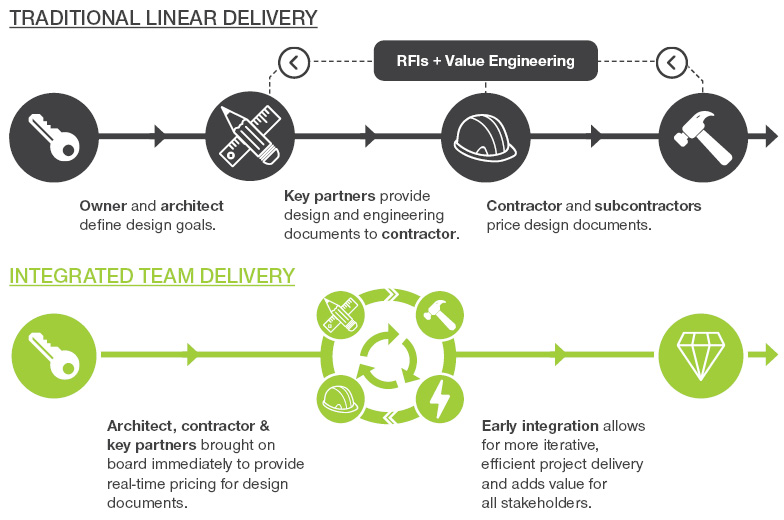As the spaces we build become increasingly complex, it’s important to collaborate effectively and proactively with all team members — including owners, architects, engineers, builders, consultants, subcontractors and suppliers — through every stage of a project. From our perspective, the goal of this focus on team integration is simple: to ensure builders are equipped with the accurate, timely design documents we need to achieve the architect’s vision within the cost and schedule requirements of our clients. By closing the gap between design and construction, contractors can facilitate a more cost-effective project for owners.
Sellen recently launched the Integrated Design and Construction (IDC) to help close the gap between design and construction. The first step was establishing a clear baseline upon which to build. Requests for Information (RFIs) — which occur when builders and subcontractors need additional design information to execute work in the field — were used as a measuring stick. Our preconstruction team sifted through data from 10 recently completed projects to diagnose the root cause of more than 10,600 RFIs. With this data, the team calculated the average cost of each RFI at approximately $3,100. Reducing the volume of RFIs would lead to significant cost savings for all project stakeholders, improve quality control in the field, make safer job sites, and help crews execute quality buildings for our clients.

Today, a multi-disciplinary steering committee at Sellen comprising architects, engineers, estimators, project managers, superintendents and virtual modelers are working to develop new best practices. This “toolkit” includes communication processes to help improve the flow of information among owners, designers, builders and subcontractors. For example, Sellen’s teams have found new ways to leverage our existing modeling capabilities, using a single platform to integrate cost, schedule and site logistics data with intuitive 3-D renderings and animations.
The early results of Sellen’s IDC initiative have been very promising. These tools help our teams define the design information and documents we need from our design partners; allow for earlier and more effective integration with subcontractors and design consultants; and ensure improved value for our clients.


